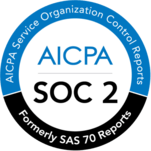What is Text Mining?

Text mining, also referred to as text analysis, is the process of obtaining meaningful information from large collections of unstructured data. By automatically identifying patterns, topics, and relevant keywords, text mining uncovers relevant insights that can help you answer specific questions.
Imagine you want to analyze the conversation around your brand in social media to find out how your customers feel about your business. Reading and manually classifying each mention or interaction would be very time-consuming, especially if you have to deal with hundreds of them. However, thanks to sentiment analysis ― a text mining algorithm that identifies the opinions in a text and tags them as positive, negative, or neutral ― you can perform real-time analysis in just seconds, regardless of the amount of data you need to analyze.
But how does text mining work? It uses machine learning (a subfield of Artificial Intelligence) to train algorithms that allow computers to learn how to do certain tasks by themselves.
Basically, there are two main text mining techniques: text classification and text extraction. The first consists of assigning predefined categories to a text, based on its content (and can be used to identify topics, sentiment, language, etc), while the latter is focused on extracting specific pieces of data from text (like keywords, prices, company names, etc).
What Can I Use Text Mining For?
Text mining makes it possible to detect trends and patterns in data that can help businesses support their decision-making processes. Embracing a data-driven strategy allows companies to understand their customers’ problems, needs, and expectations, detect product issues, conduct market research, and identify the reasons for customer churn, among many other things.
For example, you can use aspect-based sentiment analysis to examine product reviews and find out what your customers like and dislike about your product. The graph below shows the results of analyzing thousands of Slack reviews. Notice that the Good (or positive) comments relate to Integrations and Purpose, while most of the complaints are about Performance-Quality-Reliability, Pricing, and Notifications.

You can also use text mining to analyze other forms of customer feedback, like open-ended responses in NPS surveys. Text mining can help you tag these responses and easily identify the number of promoters, passives, and detractors for each category. Below, you can see how Retently analyzed NPS responses using MonkeyLearn:

The chart shows that the categories Ease of Use and Product UI only have responses from promoters. On the other hand, a large percentage of customers mention product features. Results like these provide you with actionable insights, and in this case, you might be inclined to take a closer look at the features customers are requesting and implement some of them into your software. Data-based decisions that respond directly to your customer requests can be key in turning detractors into promoters.
Finally, text mining can help customer service teams automate certain routine tasks, such as tagging incoming support tickets, detecting what’s urgent, and routing tickets to the most appropriate agent. For example, you can automatically route all the support tickets about customers experiencing technical issues to the agent with the necessary knowledge to solve those issues. This saves employees valuable time that they can use to find the best solutions for their customers, and provide more personalized support experiences.
Why Is Text Mining Important?
Every day, a massive amount of digital data is created, from social media posts, chats and emails to reviews, comments on blogs and forums… you get the idea. The thing is that 80% of this data is unstructured; this means it’s not organized in any predefined way, making it difficult to process and analyze. Being able to make sense of large volumes of unstructured data is one of the main challenges for businesses today.
In this context, text mining provides a cost-effective and reliable solution, making it possible to analyze data on a large scale and obtain fast and accurate results.
One of the main advantages of text mining is that it saves time and resources, by allowing you to automatically analyze large sets of data in just seconds. The process is scalable: once a machine learning model has been trained to perform a certain task (let’s say, classify support tickets in categories like Bug Issue, Feature Request, or Payment Issue), it can analyze as much data as you need.
Also, text mining is able to conduct real-time analysis, allowing businesses to quickly detect urgent issues, such as a technical issue affecting their product, an angry customer that has left a negative review, or a potential PR crisis about to explode on social media.
Finally, text mining applies consistent criteria to all your data and leaves any type of subjectivity aside.
How Do I Get Started with Text Mining?
Although text mining might sound like a complex concept, it’s actually very easy to get started with, even if you don’t have any programming skills. With an AI-platform like MonkeyLearn you can access a series of pre-trained machine learning models and use them to analyze your own data.
Here’s a pre-trained sentiment analysis model you can try right away. You just need to paste or write some text into the model (like a tweet mentioning your brand) and click on ‘Classify Text’:
However, if you need a more personalized solution that captures the particularities of your industry, you can follow a few simple steps and build your own models for text classification and text extraction.
Whether you are using a public or customized model, you can process a whole dataset by uploading it as a batch, use integrations with third-party apps, or access the MonkeyLearn API.
Final Words
Text mining provides a cost-effective solution to the problem of processing large volumes of unstructured data. Creating machine learning algorithms that learn to automatically perform tasks like text classification and text extraction, allows you to get valuable insights that you can use to make better business decisions.
Getting started with text mining can be very simple. Want to give it a try? Contact us at MonkeyLearn and request a personalized demo from one of our experts.


